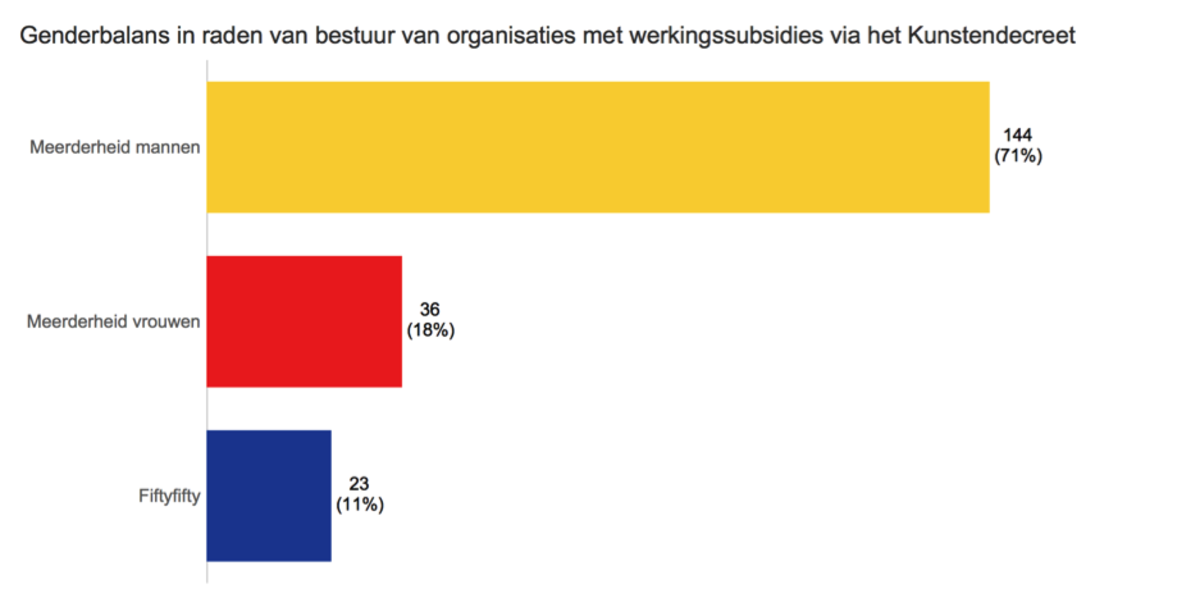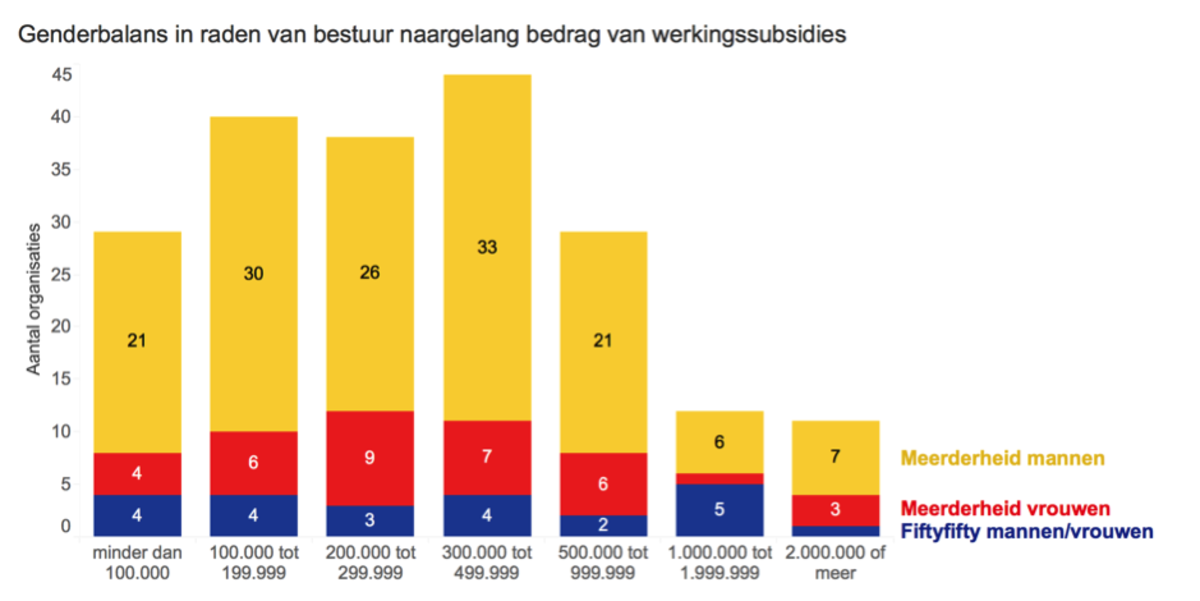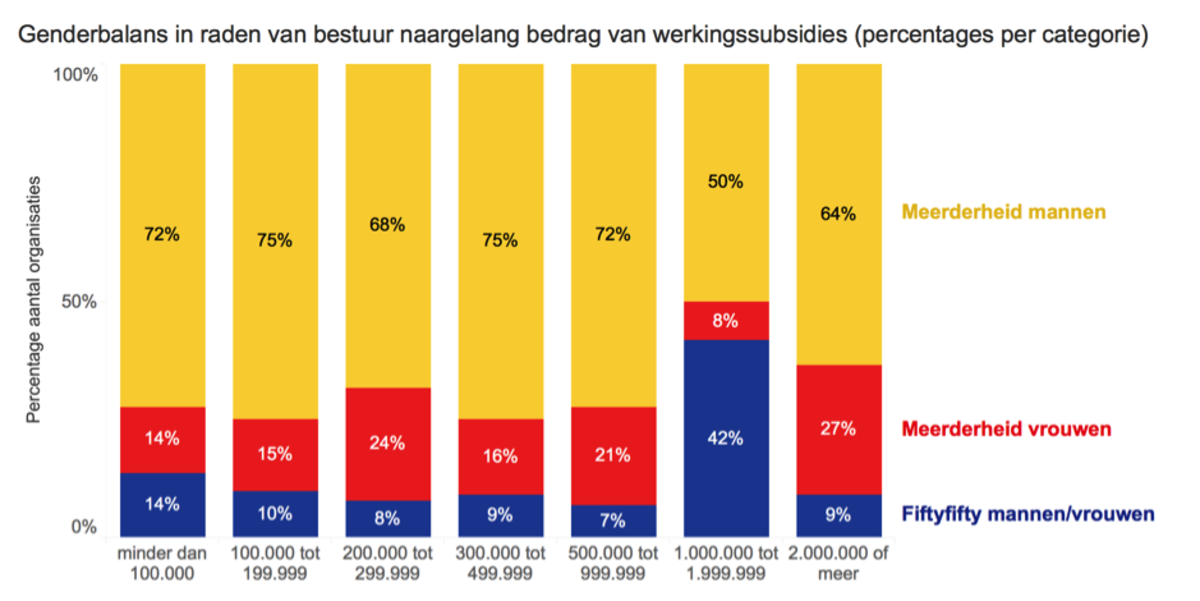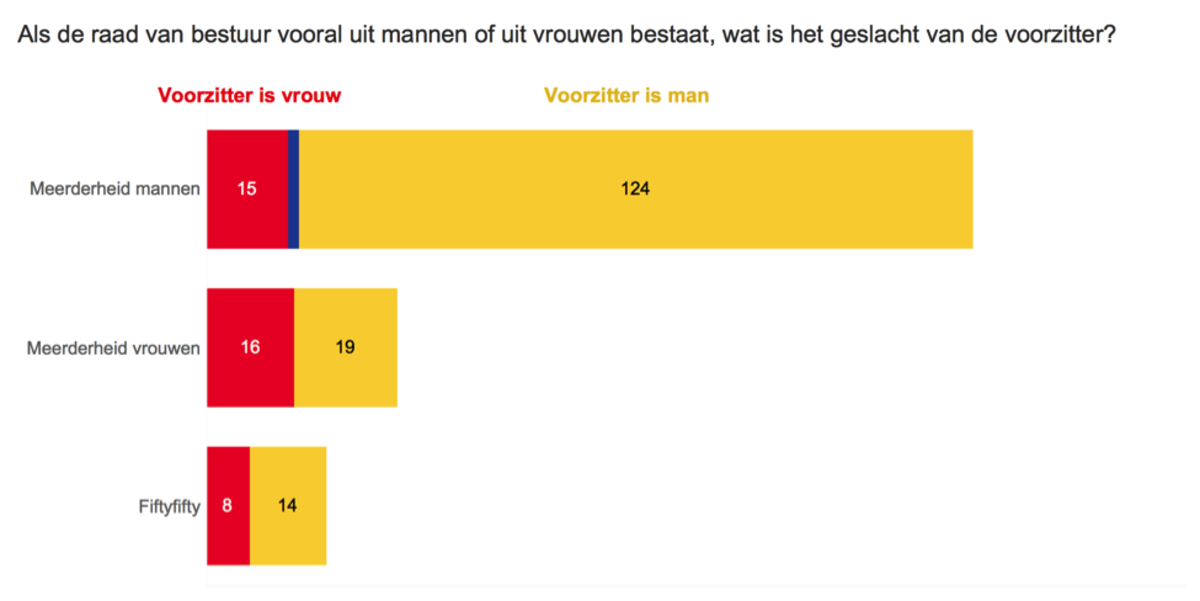The Skewed Gender Balance in the Boards of Flemish Artistic Organizations
Door ENGAGEMENT ARTS, op Wed May 15 2019 22:00:00 GMT+0000Who's taking the real decisions in the artistic landscape of Flanders? An analysis of the boards of artistic organizations makes very clear it's mostly men. Here some figures.
Lees hier de Nederlandstalige versie
The graphs below portraying the gender balance on the boards of artistic organizations in Flanders include information about 203 of the 216 organizations structurally subsidized by the Kunstendecreet (207 werkingssubsidies, 7 Kunstinstellingen, Kunstenpunt and VAi). The graphs that contain additional information about the gender of the presidents include 198 of those 203.
Information about the gender balance on the boards of the structurally subsidized organizations was supplied to Engagement by the Departement 'Cultuur, Jeugd en Media' of the Flemish Government and refers to the year 2017, as does the information about the amounts of subsidies supplied through the Kunstendecreet.
Approximately 80% of artistic organizations have a male president.
Missing data about the gender balance of some of the organizations and the information about the gender of the presidents of the boards was collected by Engagement through the online databases of the Belgisch Staatsblad and the Nationale Bank. During this additional data collection, the most recent publicly visible information was collected. The graphs were drafted with the support of Kunstenpunt/Flanders Arts Institute.
The research is currently limited to gender due to the lack of accessibility to certain personal information. In depth research is required to map other aspects of identities.
1. Overall gender balance in 203 (out of 216) organizations structurally subsidized by the Kunstendecreet (2017)
This graph shows that 71% of the (203) organizations have a board with a majority of male members, 18% with a majority of female members and 11% with a composition of half men and half women.

2. Gender balance on boards in relation to the amount of funding received through the Kunstendecreet (in absolute numbers and in percentages) (2017)
In the following graphs, the gender balance on the board is related to the amount of subsidies the (203) organizations received in 2017 as an indication of their size and symbolic position in the field of the arts.


These graphs demonstrate that male dominance on the boards of the arts organizations is present throughout the different categories indicating the level of subsidies for the organizations.
The two groups of organizations with the strongest representation of women on the boards are the ones with the highest subsidies. Among the 12 organizations with a subvention between 1 and 2 million euros, 42% have a board with a 50-50 gender balance, 8% has a board with mostly women, and half of them have a board with mostly men.
Among the 11 organizations with more than 2 million euros Kunstendecreet subsidies, in total, 36% have either a female majority or a 50-50 board.
3. Gender of the presidents of the boards
Of 198 of the organizations for which we had full information about the gender balance on the board, we were able to collect information about the gender of the president of the board.

Approximately 80% of the 198 organizations have a male president. Approximately 20% or only one in five organizations has a female president. Two organizations have a board with a co-presidency of two people where one is male and one is female.
4. Gender balance on boards combined with the gender of the president

This last graph demonstrates that among the majority-male boards, 88% also have a male president (124 out of 141). Hence, rather than counterbalancing the male dominance with a female position at the head of the table, the male majority translates to a higher percentage of male presidency (80% overall as compared to 88% on the mostly-male boards).
In the majority-female boards, still a majority of the organizations (54%) have a male president while around 46% (16/35) have a female president. It shows that even in the context where women have a numerical majority, in most cases a man takes the position with the most power. In the organizations with a 50-50 gender balance, two in three has a male president.